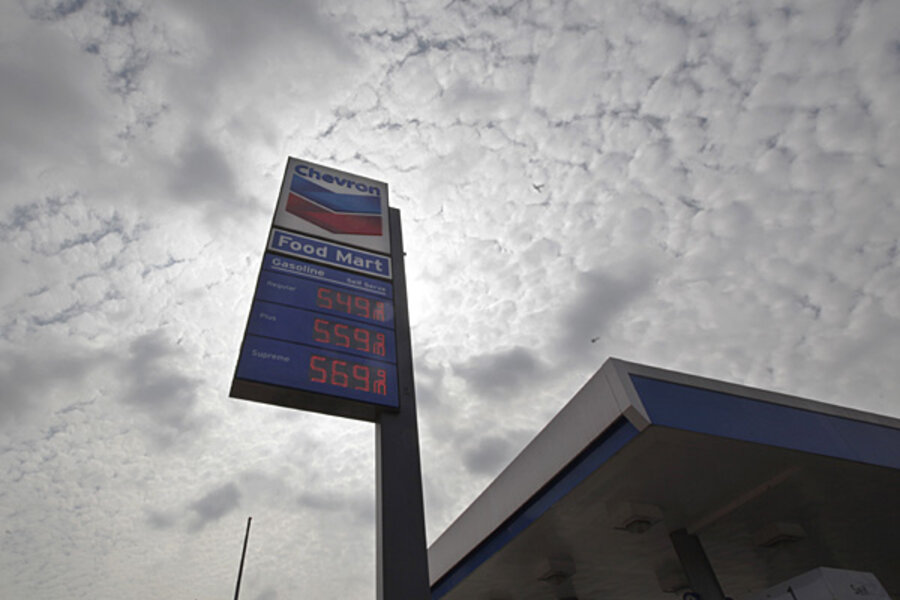Gas prices push consumer costs up in September
If it weren't for gas prices, consumers would have had a pretty good September.
The US Bureau of Labor Statistics announced Tuesday that its core consumer price index (CPI) rose only 0.1 percent for the third month in a row, suggesting mild underlying inflation.
The problem? The core CPI excludes food and energy. Count them in and the overall CPI jumped a much larger 0.6 percent last month.
Behind that surge was gas prices. They rose 7 percent on the heels of a 9 percent rise in August 2012 — they're third straight increase.
Wall Street took all this in stride, with the Standard & Poor's 500 index up nearly 1 percent in late afternoon trading.
The rise in energy costs far outstrips food prices, which nudged upward just 0.1 percent last month despite this year's severe drought.
"The CPI report was pretty much what the market was looking for with a large headline increase – same as in August – with the same culprit: a large increase in energy prices," Cary Leahey, an economist at Decision Economics, told Reuters.
The impact on consumers is more negative. Although gas prices have ebbed and flowed in 2012, they're up 6.8 percent overall from a year ago. Fuel oil prices are not far behind: up 4.0 percent from a year ago.
The rise in national gas prices last month does not include the spike in gas prices in California, which peaked earlier this month and will be included in the October report. That spike set new record gas prices for the state and was blamed on refinery and pipeline closures combined with the anticipated switch-over to winter-blend fuel. Lawmakers have called for a federal investigation to see what was behind the temporary surge.
The national surge in gasoline prices has not been matched by other energy sources. Over the past year, natural gas and electricity prices have declined (10.7 and 1.5 percent, respectively).
So far, the higher prices at the pump have not shaken consumer confidence.
"What's particularly interesting is that the rise in gasoline prices has not made a major dent in consumer sentiment," Mr. Leahey told Reuters, "which has picked up noticeably in the last six weeks and people are buying lots of stuff ranging from back to school needs for their children as well as the new version of the iPhone."






